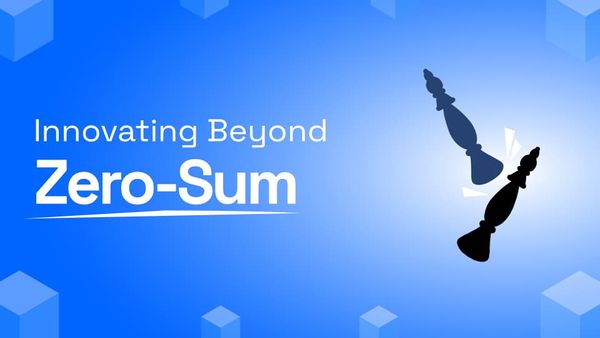Phil Southwell is a Yacht Designer with 40 years of experience. He is on a mission to offer a new way of incorporating proper workflow management into the marine industry. This article covers Phil’s story and how he’s disrupting the yacht design industry using Speckle.
Setting The Scene
The Marine industry faces significant issues with change management. Because yachts are so complex and yet so personal, yacht designers often end up with frustrated owners and exasperated yard management. No one wins in this. Phil discovered Speckle while seeking an efficient method for importing Excel data into Grasshopper. This discovery led to significant project design time savings and offered a better way to collaborate with remote and multi-disciplinary teams. In this interview, Phil shares his story with us.
Introducing Phil and YachtSoft
How did you develop an interest in Yacht Design Software?
With over four decades of yacht design experience and over a hundred designs under my belt, I've decided it's time to give back to the industry I've cherished for so long. Initially, I thought about writing a Yacht Design book, but books often get tucked away on a shelf in this fast-paced world. Instead, leveraging my BSc in Computer Science and my experience in designing systems, I've embarked on a journey to develop a suite of software tools. These tools aim to streamline the design process, providing valuable guidance to budding designers grappling with complex challenges.
How did you come across Speckle?
In the early stages, I used conventional tools like databases and spreadsheets, along with local storage for data and 3D model management, all within the Grasshopper for Rhino environment. However, the need for more extensive collaboration led me to seek an enterprise-level solution, and that's when I discovered Speckle.
As development progressed, it became evident that the 3D model, which serves as the foundation for all relevant data, could be effectively shared through Speckle. This paradigm shift made the virtual model the central repository for all things related to a vessel. Thanks to the power of parametric design, even the slightest change can trigger a complete workflow regeneration, automatically recalculating every aspect.
This shift enabled comprehensive calculations – ranging from dynamic loading, hydrostatic analysis, and structural generation – directly on the virtual model. Additionally, we could send data via APIs to complementary software for tasks like CFD, FEA, ISO scantlings, rig geometry, and more. The software's ability to calculate intricate details, such as nested full-size panels for laser cutting, flotation, costing, bill of materials, and tankage, proved invaluable.
The realisation that the virtual 3D model perfectly represents the finished product, showcasing trim, heel, and sinkage as the virtual vessel finds equilibrium in a virtual liquid, was a game-changer.
Accelerating Innovation Using Speckle
How did you use Speckle with your team?
Internally, we used Speckle to store attributes alongside geometry, with in-house Streams facilitating seamless communication between our office, engineers, and builders. Speckle's open-source and free nature encourages widespread adoption and innovation within the community.
Speckle's data and geometry Streams hold a wealth of information, time-stamped and replaced by subsequent updates. This ensures remote teams always have access to the latest, most accurate data. Change management becomes a breeze, with two-way communication allowing designers to resolve issues efficiently. If work needs to be recalled, updated quotes can be generated confidently.
What are your future plans with Speckle?
Our vision is to offer the core functionality of YachtSoft as an open-source platform, potentially addressing broader industry-specific challenges. We aspire to consult and design workflows tailored to larger companies. An industry-standard platform and workflow would offer numerous advantages, as current solutions often lack cohesion and seamless integration.
Looking ahead, we aim to develop Speckle add-ons customised for the marine industry, similar to the Revit add-on for architects. Boats present unique challenges compared to buildings, as they carry their own infrastructure out to sea and boast intricate, curvy designs. They're constructed from fundamentally different materials and endure extreme dynamic loads, unlike anything a land-based structure would experience.
Which parts of Speckle did you find the most useful for you and your team?
1. Change management is suddenly no longer an issue.
As the design progresses you may spot a shape that jars or doesn't fit with the overall aesthetic? Normally spotting this, and fixing it, would happen early on in the design cycle. But what if it didn’t? Maybe the client showed the drawings to someone who spotted it after the proposal drawings were formally approved. This could be a disaster as it may have already affected many downstream decisions. These include awnings, stern-down trim, areas, solar panel mounting, supports, main-sheet tracks, sun and rain protection, costing etc. if the change is severe enough, quotes would have to be updated, and there is now room for cost creep.
2. Data is fluid.
A single adjustment to a line or input parameter can regenerate the entire model, thanks to the initial parametric design. Weights, areas and centre of gravity are all updated. As is the bill of materials. Anything linked to this particular edge is updated. The awnings may actually work better, shade and rain coverage could be enhanced. The client gets to see the pros and cons and expectation management is enhanced. When models are updated, everyone with access receives updated data streams automatically, with comments explaining why the change was made. 3D models and data are always fully up to date. New drawings can be issued and, depending on the contract, cost increases (and possibly savings in other areas) will be updated at the system level.
3. Quotes are easy.
Directly linking costs to model areas streamlines the process for Requests For Quotes (RFQs). And after contracts are signed, they give confidence to all parties because the update process is transparent. The labour component doesn’t change if the change management is so quick that no processes are halted (the most expensive and annoying aspect of late-stage changes). New drawings are rolled out within minutes, and the workflow continues seamlessly; a huge win-win for the client, designer, in-house design team, foreman and even the team on the shop floor - who get their shop drawing an hour after the change decision. Time stamps are in minutes, not days.
4. Communication is a two-way process.
In fact, should a floor-level team member have feedback or a better idea (it often happens, believe me), they can readily communicate this with the design team; they can comment on the Stream with the new suggestion, and the designers get a ping so that they can incorporate this better way of doing things (with or without involving the client) within the hour.
5. Single Master Source.
With the 3D model as the central information source, data becomes fluid rather than static, unlike traditional paper files. Streams contain the entire history of the project and all comments in one place, accessible to anyone. The latest Stream is always top-of-mind and contains the latest solution to multiple, complex problems. Keeping the information on the cloud is great for everybody, but having a Stream that can be updated in one direction and feedback included in the other is just better. Just. Better.
Conclusion
The Featured Developer series is where we at Speckle would like to celebrate people using or contributing to Speckle. If you would like to share something you are working on that you are proud of, or if you would like to share your insight with the Community and us, let us know!
Even if you don’t consider yourself a developer but are creating something with Speckle in a more tangible sense, we will also feature interesting projects Built with Speckle.
Subscribe to our newsletter for more!



